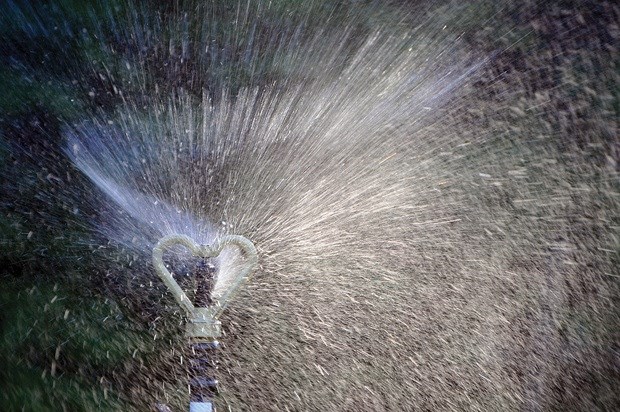An unusually hot, dry start to the summer, with no rain in sight means officials are keeping a close eye on Metro Vancouver’s water supply.
A warm, dry winter that resulted in below-normal snowpack and rainfall has combined with soaring water use across the region as temperatures have risen.
“We’re monitoring the situation daily,” said Darrell Mussatto, mayor of the City of North Vancouver and chairman of Metro Vancouver’s utilities committee.
Water reservoirs — including Seymour, Capilano and Coquitlam — that serve Metro Vancouver’s 2.4 million residents are currently sitting at about 83 per cent full, which is near the low end of a normal range.
But the forecast for a hot dry summer and current water use patterns aren’t encouraging.
“We’re at historic lows of our creeks and streams running into our reservoirs,” said Mussatto.
In addition, “we are using 17 per cent more water than we were last year,” he said.

Year round, Metro Vancouver sucks up an average of one billion litres of water a day. The current average is closer to 1.5 billion litres, with a season high so far of 1.57 billion litres on June 13.
On the plus side, Mussatto said the region has made positive changes to water use patterns in the recent decades. The amount of water used per capita has dropped significantly, for instance.
Back in the mid 1980s, before conservation dented the public mindset, Metro Vancouver users flushed, sprinkled and showered their way through 743 litres per capita daily and almost double that in summer. In contrast, the average per-capita water use in 2013 was about 471 litres.
But because the region’s population has also boomed, so has overall water consumption. Our overall use of a billion litres a day is more than 25 per cent higher than it was 30 years ago. (About 60 per cent of that is residential, while 40 per cent is commercial or industrial use.)
In heat waves, like the one that was expected this weekend, that can spike to daily water use of between 1.5 and 2 billion litres per day.
What are people doing with all that water? They’re watering their lawns, washing their cars, even taking more showers than usual, said Mussatto.
If the current trend continues, Metro Vancouver may have to buy more water from BC Hydro’s Coquitlam reservoir. While the local government controls Seymour and Capilano reservoirs, Coquitlam is managed by BC Hydro.
In 2014, Metro Vancouver asked BC Hydro to set aside 50 billion litres for water supplies, worth $630,000, and ended up using 33 billion litres. This year Metro Vancouver has asked for 68.2 billion litres of water and has budgeted $862,000.
Water administrators may also consider moving from current Stage 1 sprinkling regulations — which allow sprinkling three times a week — to Stage 2, which would cut sprinkling to once a week. But even that is not without problems, said Mussatto — when everyone in the Lower Mainland turns on the hoses at the same time, local water storage reservoirs can drop precipitously low in short order. “It puts a very big drain on the delivery system,” he said.
Mussatto acknowledges not everyone follows the rules when it comes to water use. In the City of North Vancouver, the approach to those caught sprinkling when they shouldn’t has been one of warning and education unless there have been repeated problems.
Policy makers know that water meters are one effective tool in changing people’s water use patterns.
“If they get hit in the pocketbook they may learn a lot quicker,” said Mussatto.
But Metro’s relatively cheap bulk water rates compared to the high cost of retrofitting water meters means few municipalities have chosen to go that route. On the North Shore, West Vancouver, which has its own water system, is the only area where residential water meters have been installed.
Mussatto said if extended hot, dry summers and low snow pack become the “new normal” in Vancouver, issues like water metering may have to be reconsidered in the future, along with other potential long-term, expensive solutions like raising the height of the Seymour Falls dam.
For now, however, taking more water from the Coquitlam Reservoir and changing water consumption patterns are preferred by policy makers.
“Are we using it to water lawns and wash our cars?” said Mussatto. “Maybe that’s a conversation we’re going to have to have as a community.”
Mussatto said with that in mind, he’s changed his own water use patterns. “I didn’t even think about watering my lawns,” he said. Washing the car has also been ditched, and “the 10 or 15 minute showers are gone.”
— with files from Jen St. Denis, Business in Vancouver



